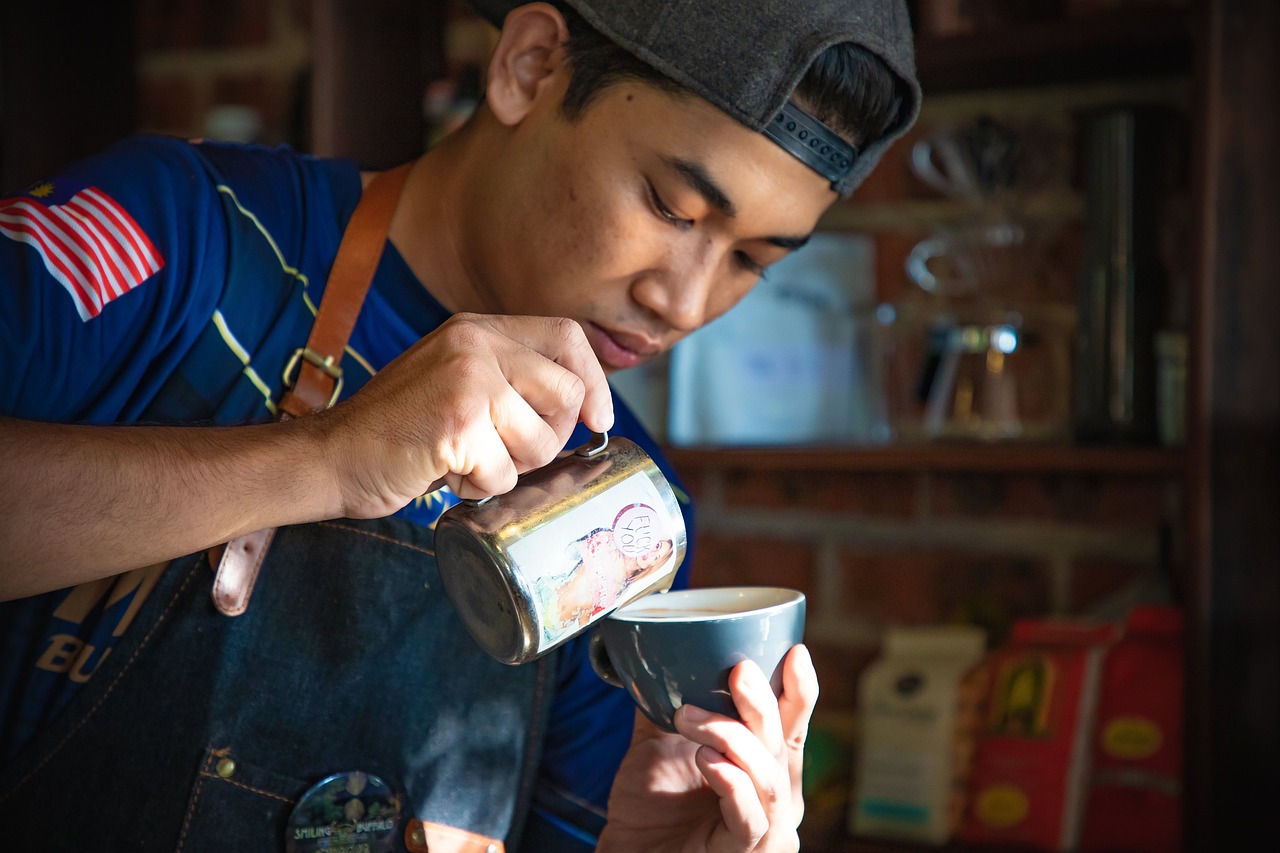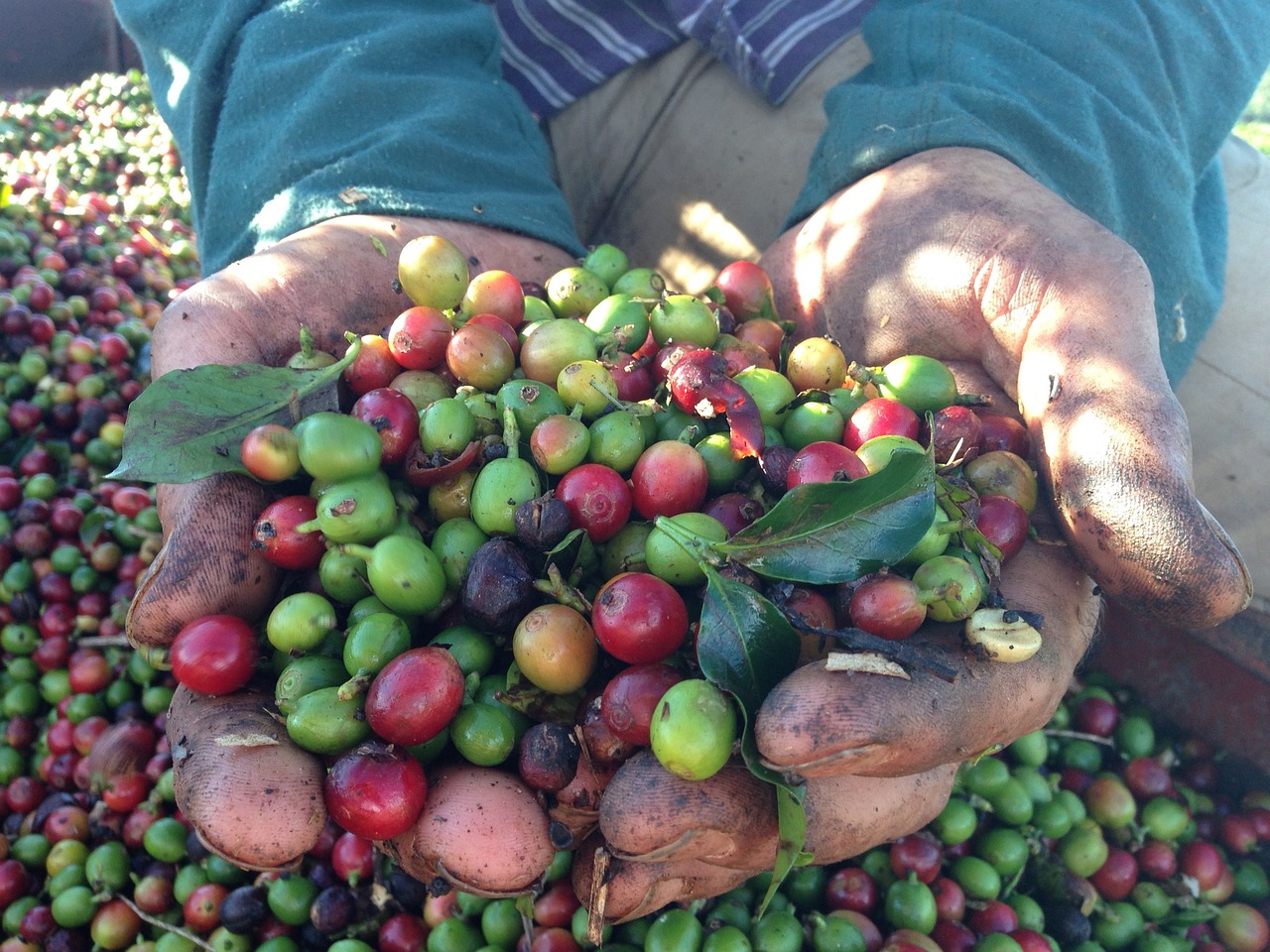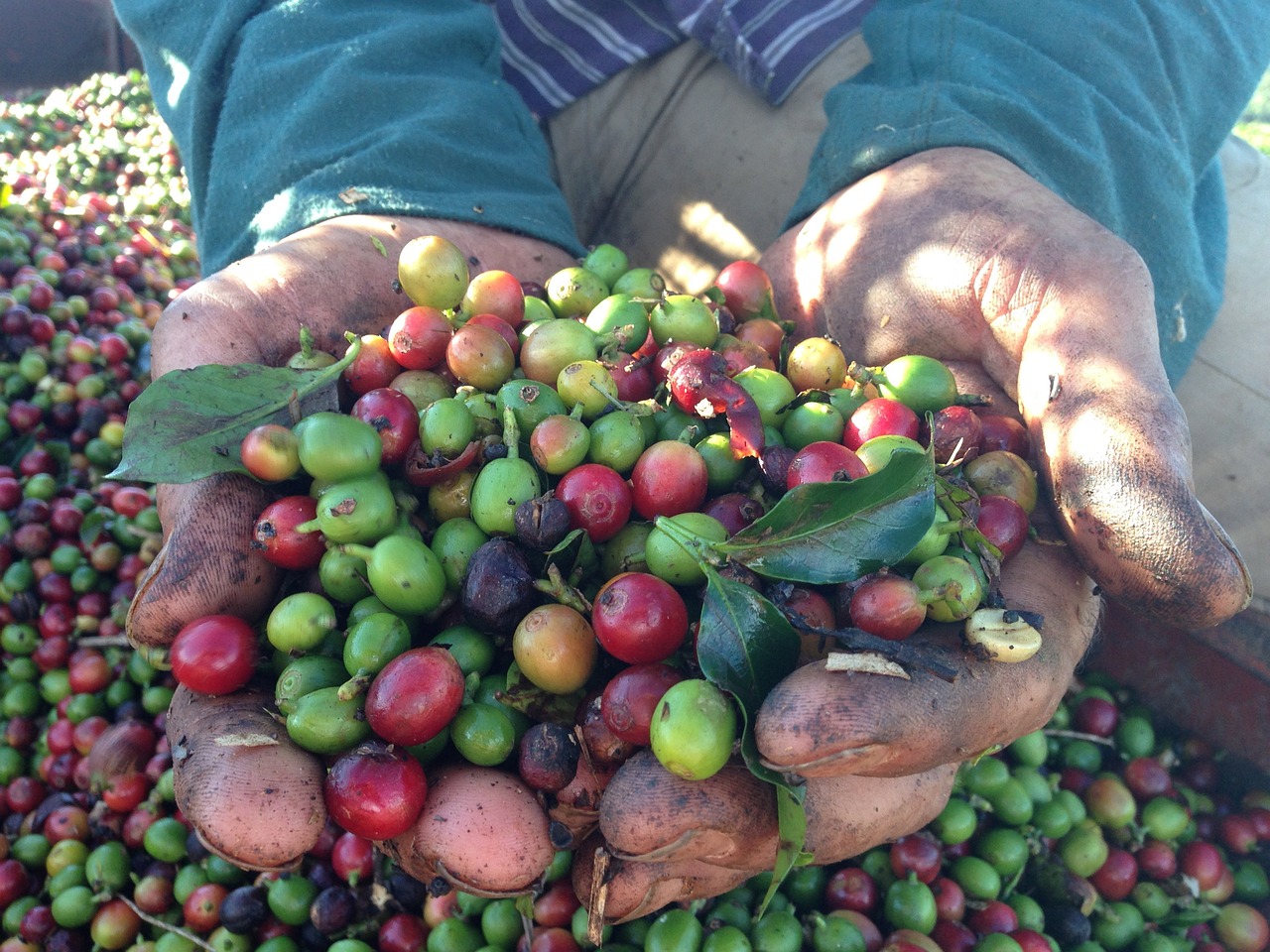Step into a world where the aroma of freshly brewed coffee wafts through the streets, where a simple cup of coffee is more than just a morning pick-me-up. Coffee, with its rich and robust flavors, has become an integral part of cultures around the globe. From the bustling cafes of Paris to the traditional coffee ceremonies in Ethiopia, the cultural significance of this beloved beverage knows no boundaries. Join us on a journey as we explore the diverse customs, rituals, and traditions that make coffee an essential part of our global heritage. Brace yourself for a caffeinated adventure that will awaken your senses and ignite your passion for all things coffee.

History of Coffee
Coffee, a beloved beverage enjoyed by millions around the world, has a rich and fascinating history that stretches back centuries. In this article, we will explore the origins of coffee, its spread across the globe, its role in ancient civilizations, and how it has become ingrained in various cultures and traditions.
Origins of Coffee
The story of coffee begins in Ethiopia, where its discovery is said to have occurred over a millennium ago. According to legend, a goat herder named Kaldi noticed that his goats became energized and restless after consuming the berries from a certain shrub. Intrigued, he tried the berries himself and experienced a similar effect. News of this magical fruit spread, and soon the practice of brewing coffee was born.
From Ethiopia, coffee cultivation spread to the neighboring regions of Yemen and Arabia. By the 15th century, coffee had become a popular drink in the Islamic world, not only for its stimulating properties but also for its role in religious ceremonies. Islamic scholars also recognized the potential health benefits of coffee and its ability to aid in digestion.
Spread of Coffee
Coffee’s journey from the Arabian Peninsula to the rest of the world was largely facilitated by trade networks. In the 16th century, coffee reached the shores of Europe through the Mediterranean region and quickly gained popularity among the elite. Coffeehouses began to spring up across major European cities, serving as gathering places for intellectuals, writers, and artists. These establishments became hubs of intellectual discourse and contributed to the flourishing of the Enlightenment period.
Coffee’s expansion continued in the 17th century, with Dutch traders introducing coffee cultivation to their colonies in Southeast Asia. The fertile volcanic soils of present-day Indonesia and Vietnam proved to be ideal for growing coffee, and these regions soon became major players in the global coffee market. Meanwhile, coffee was making its way across the Atlantic Ocean, with the establishment of coffee plantations in the New World colonies, particularly Brazil.
Coffee in Ancient Civilizations
While coffee as a beverage may have originated in Ethiopia, ancient civilizations in other parts of the world also had their own ways of enjoying coffee-like drinks. In ancient Egypt, for example, there is evidence of a beverage called “qahwa,” which bears striking similarities to coffee. Qahwa was made from the husks of a plant called “bunnu” and was a popular beverage among the upper classes.
Similarly, the Mayans and Aztecs in Central America had their own versions of coffee. They cultivated the coffee plant and brewed a beverage from its roasted beans, which they believed had stimulating properties. This beverage, often mixed with spices and herbs, was consumed during religious ceremonies and important gatherings.
Coffee Growing Regions
Africa
Africa, specifically Ethiopia, is considered the birthplace of coffee. Ethiopian coffee is known for its distinct flavors, which range from fruity and floral to earthy and spicy. Other African countries, such as Kenya, Tanzania, and Rwanda, also produce high-quality coffee beans, each with its unique characteristics. Ethiopian coffee, however, remains at the heart of the continent’s coffee culture.
Latin America
Latin America, particularly Brazil, is the largest coffee producer in the world. Brazilian coffee is known for its mild and nutty flavors and is often used as the base for many commercial coffee blends. Other notable Latin American coffee-growing regions include Colombia, Costa Rica, Guatemala, and Mexico. These countries produce a wide variety of coffee beans, each with its distinct taste profile.
Asia
Asia is home to several prominent coffee-growing regions, with Indonesia and Vietnam being the largest producers in the continent. Indonesian coffee, especially those from Sumatra and Java, are celebrated for their full-bodied and rich flavors. Vietnamese coffee, on the other hand, is often characterized by its unique use of condensed milk and robusta beans. Other countries in Asia, such as India, Thailand, and Myanmar, also contribute to the region’s coffee industry.
Oceania
Oceania may not be as well-known for its coffee production compared to other regions, but Australia and Papua New Guinea have been making their mark in recent years. Australian coffee is known for its specialty beans and the emphasis on sustainable farming practices. Papua New Guinea, with its unique climate and volcanic soil, produces coffee beans with bold and complex flavors.

Traditional Coffee Drinking Rituals
Ethiopia
In Ethiopia, coffee is not just a beverage; it is an important part of the social fabric. The traditional Ethiopian coffee ceremony is a ritualistic event that emphasizes community and hospitality. The ceremony involves roasting the coffee beans, grinding them, and brewing the coffee in a clay pot called a “jebena.” The freshly brewed coffee is then served in small handleless cups called “sini.” The coffee ceremony is a symbol of friendship, trust, and respect, and it is often accompanied by traditional Ethiopian dances and songs.
Italy
In Italy, coffee is an integral part of daily life and Italian culture. The most common way to enjoy coffee in Italy is to visit a local café or “bar” and order an espresso. Italians take their coffee seriously and believe in savoring every sip. Standing at the counter, Italians engage in lively conversations as they enjoy their espresso. Coffee is also an essential part of socializing in Italy, with the “caffè” serving as a meeting place for friends and colleagues.
Turkey
In Turkey, coffee is more than just a caffeine fix; it is a symbol of hospitality and friendship. The traditional Turkish coffee is brewed using finely ground coffee beans and served in small cups alongside a cup of water and a sweet treat like Turkish delight. Turkish coffee is often enjoyed during social gatherings, where friends and family come together to share stories, laughs, and good company. A unique feature of Turkish coffee is the practice of coffee cup fortune-telling, where the residues in the cup are used to predict the future.
Japan
In Japan, coffee-drinking is a serene and contemplative experience. Japanese coffee ceremonies, influenced by the country’s long-standing tea traditions, involve meticulous preparation and presentation. Pour-over brewing methods, such as the “pour-over dripper” or the “siphon,” are favored, emphasizing the mastery of technique and attention to detail. Japanese coffee houses, known as “kissaten,” provide a peaceful respite from the bustling city streets, where one can savor a cup of carefully brewed coffee and enjoy a moment of tranquility.
Morocco
In Morocco, coffee holds a significant place in traditional hospitality. The Moroccan coffee tradition involves brewing coffee in a special pot called a “berrad.” The coffee is often flavored with spices such as cardamom, cinnamon, or nutmeg, giving it a delightful aroma and taste. Moroccan coffee is often served alongside sweet pastries and enjoyed during festive occasions and social gatherings. The act of pouring and serving the coffee is considered an art form, with the host demonstrating generosity and warmth through their hospitality.
Colombia
In Colombia, coffee is deeply intertwined with the country’s history and culture. Colombian coffee is celebrated for its rich flavors and smoothness, and it is enjoyed throughout the day. In rural areas, coffee is often brewed using traditional methods such as a cloth filter or a “colador,” which produces a uniquely Colombian coffee experience. Coffee is a central part of social gatherings, and Colombians take pride in serving their guests a cup of their finest brew, accompanied by lively conversation and laughter.
Coffee and Socializing
Coffee Houses in Europe
Coffee houses have played a crucial role in European social and intellectual life for centuries. In the 17th and 18th centuries, coffeehouses became meeting places for artists, writers, philosophers, and politicians, where they would engage in lively discussions and debate. These establishments became known as “penny universities” because, for the price of a cup of coffee, one could listen to and participate in intellectual discourse. Coffee houses were also venues for the dissemination of news and ideas, serving as incubators for the Enlightenment movement.
Kahvehane Culture in the Middle East
In the Middle East, particularly in countries like Turkey and Saudi Arabia, the coffee culture revolves around kahvehanes, traditional coffeehouses. These vibrant establishments are places where people gather to socialize, play games, and engage in deep conversations. Kahvehanes are known for their relaxed and welcoming atmosphere, where customers can spend hours sipping coffee, smoking a hookah, and enjoying good company. It is not uncommon to see people engrossed in lively debates or playing backgammon over a cup of Turkish coffee.
Coffee Shops in the Americas
Coffee shops have become synonymous with socializing in the Americas. In the United States, for example, coffee shops are often bustling with activity, serving as meeting places for friends, colleagues, and even first dates. Coffee shops provide a space for people to work, study, or simply unwind while enjoying a cup of coffee. The rise of specialty coffee shops has also led to a renewed appreciation for the art of coffee brewing, with baristas showcasing their skills and knowledge in creating the perfect cup of coffee.

Coffee and Cuisine
Coffee in Baking and Desserts
Coffee has long been a popular ingredient in the world of baking and desserts. Its rich, complex flavors and aroma add depth and complexity to sweet treats. From classics like tiramisu and coffee-flavored cakes to innovative creations like coffee-infused ice creams and coffee-flavored chocolates, coffee brings a unique twist to traditional desserts. Coffee’s bitter notes can balance out the sweetness of desserts and provide a delightful contrast of flavors.
Coffee as a Flavor Enhancer
Coffee’s versatility extends beyond desserts and baking; it also serves as a flavor enhancer in savory dishes. Savvy chefs have discovered that adding a bit of coffee to recipes like stews, marinades, and sauces can amplify the flavors and create a depth of taste. The subtle bitterness and earthy undertones of coffee complement savory ingredients like beef, mushrooms, and root vegetables, resulting in dishes that are rich, flavorful, and complex.
Coffee in Cooking
Coffee’s potential in cooking goes beyond enhancing flavors; it can also be used as a primary ingredient in various dishes. Coffee rubs, made by combining ground coffee with spices and herbs, are popular for seasoning meats like steak or pork. Coffee can also be used to make coffee-infused broths or as a base for sauces and dressings, adding a unique twist to traditional recipes. Adventurous cooks have even experimented with using coffee in unconventional ways, such as coffee-braised vegetables or coffee-flavored gravies.
Coffee and Work Culture
Coffee Breaks
One of the most cherished traditions in workplaces worldwide is the coffee break. Whether it’s a mid-morning pick-me-up or an afternoon refresher, coffee breaks provide a valuable opportunity for coworkers to socialize, recharge, and take a momentary break from work. Beyond the caffeine boost, the act of gathering around a coffee machine or kitchenette fosters a sense of camaraderie and encourages informal conversations, leading to a more collaborative and positive work environment.
Coffee in the Workplace
Coffee has become a staple in many workplaces, with employers recognizing its positive impact on productivity and morale. Many companies provide their employees with access to coffee machines, espresso bars, or dedicated cafes within the office premises. By offering quality coffee options, companies aim to create a comfortable and inviting workspace and ensure their employees feel valued and well taken care of. Coffee also acts as a catalyst for impromptu meetings and brainstorming sessions, promoting collaboration and creativity.
Coffee and Health Benefits
Antioxidant Properties of Coffee
Coffee is often hailed for its numerous health benefits, primarily due to its high antioxidant content. Antioxidants are compounds that help protect the body against cell damage caused by free radicals, which can lead to chronic diseases. Coffee is rich in polyphenols and other antioxidants, which have been linked to a reduced risk of conditions such as heart disease, type 2 diabetes, and certain types of cancer. While moderation is key, incorporating coffee into a balanced diet can contribute to overall health and well-being.
Caffeine’s Effects on the Body
Caffeine, the naturally occurring stimulant found in coffee, is responsible for its energizing effects. When consumed in moderation, caffeine can improve focus, alertness, and cognitive performance. It stimulates the central nervous system, blocking the effects of adenosine, a neurotransmitter that promotes sleep and relaxation. This wakefulness-promoting property of caffeine makes coffee an ideal companion during early mornings or late-night study sessions. However, it is important to be mindful of individual caffeine tolerance and potential side effects, such as insomnia and increased heart rate.
Coffee and Mental Alertness
The relationship between coffee and mental alertness is well-established. Studies have shown that coffee consumption can enhance cognitive function, memory, and overall mental performance. The combination of caffeine’s stimulating effect and coffee’s antioxidants may contribute to improved brain health and a reduced risk of neurodegenerative diseases like Alzheimer’s and Parkinson’s. While more research is needed to fully understand the mechanisms behind coffee’s impact on mental alertness, it is clear that enjoying a cup of coffee can help start the day on a focused and energized note.
Coffee in Art and Literature
Coffee Depictions in Paintings
Coffee has been a popular subject in art, with numerous paintings throughout history featuring its consumption and cultural significance. From 17th-century works such as “The Coffee Drinker” by Michiel van Musscher to 20th-century pieces like “Still Life with Coffee Grinder” by Juan Gris, artists have been inspired by the rituals and ambiance surrounding coffee. These artworks often depict coffeehouses, conversations, and contemplative individuals enjoying a cup of coffee, reflecting the social and intellectual aspects intertwined with the beverage.
Coffee References in Literature
Coffee’s influence can also be seen in literature, where it has been referenced by countless authors in various forms. From the coffeehouses of Dickens’ London to the cafes of Hemingway’s Paris, coffee has served as a backdrop for fictional scenes and a symbol of cultural exchange. Authors have often used coffee as a metaphor for conversation, social interaction, or moments of reflection. Literature has captured the sensory experience of coffee, from the aroma of freshly brewed coffee to the warmth of the cup in hand, creating an immersive reading experience for coffee lovers.
Coffee in Film and Television
Coffee’s presence can even be felt in the world of film and television. From iconic scenes at the neighborhood coffee shop, like in “Friends,” to the morning routine of invigorating coffee in “Groundhog Day,” coffee has become a familiar and relatable element in visual storytelling. Coffee’s role extends beyond its consumption; it is frequently used as a prop to enhance specific character traits or settings. Whether it’s the cozy ambiance of a coffeehouse or a detective’s steaming cup of coffee as they piece together clues, coffee adds depth and realism to the on-screen narrative.
Coffee Traditions and Ceremonies
Ethiopian Coffee Ceremony
The Ethiopian coffee ceremony is a vibrant and symbolic tradition that reflects the country’s cultural heritage. The ceremony is typically conducted by a woman designated as the “Bunna Tetu,” or coffee lady. The woman carefully roasts green coffee beans over an open flame, filling the air with intoxicating aromas. Once the beans are roasted, they are pounded and ground to a fine consistency using a mortar and pestle. The ground coffee is then brewed using a “jebena,” a clay pot with a long neck. The freshly brewed coffee is poured into small cups and served to guests with a sense of warmth and hospitality.
Japanese Tea and Coffee Ceremonies
In Japan, both tea and coffee ceremonies hold significant cultural importance. The tea ceremony, known as “chanoyu,” is a highly ritualized and meditative practice that focuses on the preparation and serving of matcha tea. However, in recent years, coffee has also found its place in Japanese ceremonies. Coffee ceremonies, influenced by the principles of tea ceremonies, emphasize attention to detail, precision, and the appreciation of the beverage. These ceremonies often involve precise brewing methods, such as pour-over techniques or siphon brewing, allowing participants to savor every aspect of the coffee experience.
Turkish Coffee Reading
Turkish coffee reading, also known as “tasseography,” is a tradition that dates back centuries. After a cup of Turkish coffee is consumed, the residual coffee grounds are left in the cup. The cup is then inverted onto a saucer to allow the remaining coffee to drip down the sides. Once the cup is empty, it is turned right-side up, and the patterns formed by the coffee grounds are interpreted by a fortune-teller. The patterns and shapes reveal insights about the drinker’s future, providing a sense of mystique and excitement. Turkish coffee reading is still practiced in various Middle Eastern and Balkan countries today.
Coffee and Global Trade
Economic Impact of Coffee
Coffee’s economic significance cannot be overstated. The global coffee trade is a multi-billion-dollar industry that drives economic growth in many countries. Coffee-producing regions often rely heavily on coffee cultivation and export as a major source of income and employment. From small-scale farmers to large plantations, coffee production supports millions of livelihoods worldwide. Additionally, coffee exporting countries benefit from the influx of foreign currency, contributing to their overall economic development.
Fair Trade Coffee
In recent years, there has been a growing emphasis on fair trade coffee, a movement aimed at ensuring farmers receive fair compensation for their products. Fair trade certification guarantees that coffee is produced and traded under fair conditions, with farmers receiving a fair price for their beans and adhering to environmental and social standards. By supporting fair trade coffee, consumers play a role in promoting sustainable and ethical practices in the coffee industry, improving the lives of small-scale farmers and their communities.
Coffee Futures and Market Surveys
The coffee market is highly dynamic and subject to fluctuations in supply and demand, weather conditions, and global economic factors. To navigate these complexities, market participants often rely on coffee futures and market surveys. Coffee futures contracts allow producers, exporters, and importers to hedge against price volatility, protecting themselves from unfavorable price movements. Market surveys and reports provide valuable insights into market trends, consumption patterns, and emerging coffee-growing regions, allowing industry stakeholders to make informed decisions and strategize accordingly.
In conclusion, coffee’s journey from its origins in Ethiopia to its widespread consumption around the world is a testament to its cultural significance and enduring appeal. From traditional brewing methods to contemporary coffee houses, coffee has woven itself into the fabric of various societies, leaving an indelible mark on social, culinary, and artistic landscapes. With its complex flavors, energizing properties, and role in fostering connection and conversation, coffee continues to captivate and unite people across borders, generations, and cultures. So, let’s raise our cups and celebrate the rich tapestry of coffee’s past, present, and future. Cheers!

